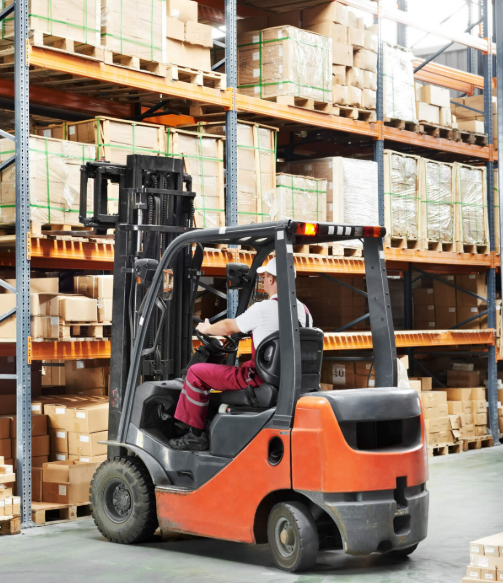
Forklift Safety: Ensuring a Safe and Efficient Warehouse Environment
Forklifts are essential to the smooth operation of many warehouses and industrial settings, helping to lift, move, and stack heavy goods. However, while these machines are powerful, they can also present significant risks when not used properly. According to the Occupational Safety and Health Administration (OSHA), forklift-related accidents lead to over 35,000 serious injuries every year in the United States, highlighting the need for a strong emphasis on forklift safety in all warehouse and fulfillment environments.
The High Cost of Forklift Accidents
Forklift accidents carry not only a human cost but a substantial financial one as well. The National Safety Council reports that workplace forklift accidents can cost companies anywhere from $40,000 for a medically consulted injury to over $1.3 million for a fatality. These costs include medical bills, lost wages, worker compensation claims, and potential damage to equipment and property.
The most common forklift accidents are tip-overs, which occur when the forklift is overloaded or when the load is handled incorrectly. These accidents are a significant concern, as they often lead to severe injuries. Another major cause of accidents is when workers are struck by forklifts. This can be due to blind spots, poor communication, or pedestrian mistakes. Falls from forklifts, while less frequent, can also happen during entry or exit or when operating on uneven surfaces. Reducing these risks requires a concerted effort across the facility.
Creating a Safety-First Culture: Best Practices for Forklift Operation
Warehouse managers can greatly reduce the likelihood of forklift accidents by adhering to best practices, including proper training and creating a culture of safety. Some essential safety priorities include:
- Operator Training and Certification: Only operators who are properly trained and certified should handle forklifts. Training should cover safe operation techniques, OSHA regulations, and the specific risks in the workplace. Refresher courses should be held regularly to ensure operators are aware of updated safety guidelines and best practices.
- Pre-Operational Inspections: Before beginning their shift, operators should perform a comprehensive inspection of the forklift. This includes checking essential components like brakes, tires, lights, steering, and warning signals. Any issues should be reported for immediate repair to ensure the forklift is safe to use.
- Load Handling and Capacity: Always adhere to the forklift’s weight capacity to prevent tip-overs. It’s critical to ensure that loads are evenly distributed and secured before lifting or transporting. The correct type of forks should also be used based on the size and weight of the load.
How Plastic Pallets Enhance Forklift Safety
While proper training is key to forklift safety, the type of pallets used in the warehouse also plays a significant role. Plastic pallets offer several advantages over traditional wooden pallets that can help improve forklift safety.
First, plastic pallets are consistent in size and weight distribution, which reduces the risk of load imbalances and tip-overs—problems that can arise with wooden pallets that warp or splinter over time. Additionally, plastic pallets are generally lighter than wood, allowing forklifts to carry heavier loads safely without exceeding their capacity. This helps prevent overloading the forklift, which could lead to accidents or machinery strain.
Plastic pallets also feature a smooth surface, reducing the chances of snags or tipping during transport. In contrast, the rough surface of wooden pallets can create instability and make it harder for forklifts to handle the load safely. Moreover, plastic pallets do not degrade like wood does, meaning they won’t obscure the operator’s view of the load, improving visibility and making it easier to maneuver the forklift without accidents.
Conclusion
Forklift safety is a critical element in creating a safe and efficient warehouse environment. Through proper training, pre-operational inspections, and correct load handling practices, businesses can significantly reduce the risk of forklift accidents. Additionally, by switching to plastic pallets, companies can enhance safety further by minimizing load imbalances and improving visibility. With a focus on these key areas, warehouses can create a safer environment for workers, reduce costs, and improve overall efficiency.